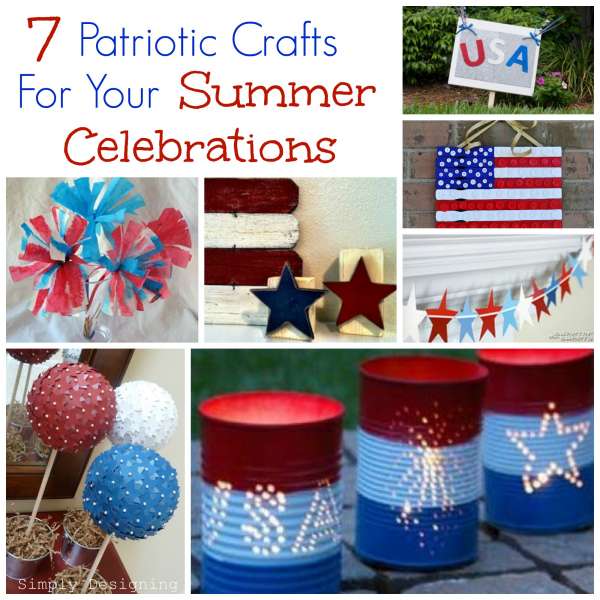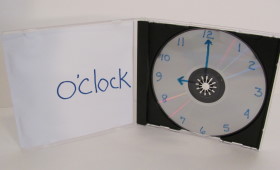
What you need
Wool roving in the following colors (Merino or Corriedale is best for this project):
1 ounce white roving
Less than one ounce black roving
Less than one ounce green roving
Less than one ounce red roving
Less than one ounce orange roving
Two small twigs, about 1/2 inch long (dried Day-lily stalks work well)
White Glue
Felting needle (any shape, fine gauge)
Wool carders or paddle-style dog brushes (optional)
An old pillow or cushion
Elastic thread (silver, gold or black)
Darning needle
Instructions
Wool roving usually comes in long, combed out tresses. Because wool is condensed during the felting, it can sometimes be difficult to gauge how much roving to start with. Here’s an easy measuring system: gently pull off a section of roving. Never cut wool roving with scissors. Roll it into a tight ball. This is how big that piece of roving will be after felting.
The Snowman Body
The final snowman has three balls of white wool, in descending sizes, 2.5 inches, 2 inches and 1.5 inches. It is best to size out all three balls before starting. Pull off three lengths of white roving, 24 inches, 18 inches and 12 inches. Because roving tresses can come in different thicknesses, roll up each length of roving to be sure that they will be the proper size after felting. Add or subtract roving so that your three tightly rolled balls are 2.5, 2 and 1.5 inches.
Start with the 24-inch piece of roving. This will be the base of the snowman. Wool is easier to felt when the fibers are messed up and ripped. Pull this tress apart, rip it into many small pieces and mess it up. You can use your carders or paddle brushes to help separate the wool. Shape the torn roving into a rough ball.
The pillow or cushion is your work surface. Put it on your lap or on a table. Do not felt on a hard surface or you may break your needle. This is where you get to work out your stress and frustrations! Begin stabbing the ball of wool with the needle. Turn the ball as you stab to keep the round shape. After 5 to 10 minutes of stabbing, the ball will be condensed down enough to shape. At this point, you can concentrate the stabbing action, on the areas that need to be rounded. When done, your ball should be firm like a plush toy.
Repeat the process with the other two balls. When done, you should have three balls of varying sizes, to stack.
Troubleshooting: If your balls are not round, continue stabbing, turning, stabbing, until they round out. If one ball is too big, condense it down with more stabbing. If a ball is too small, add some wool roving and continue to condense it down.
The Hat and Accessories
For the hat, start with a piece of roving about 6 inches long. Again, roll it tightly to check the size. It should be slightly smaller than your smallest ball. Prepare it for felting by tearing the wool into small pieces and form it into a rough ball. Condense it down with the needle and then shape it into a cylinder. Rip off another piece of roving about 4 inches long. After tearing, shape it into a flat pancake, slightly larger than the cylinder. This will be the hat brim. Lay the roving pancake on the cushion, and stab in repeatedly all over. Turn it over (it may have stuck slightly to the pillow) and repeat on the other side. Continue felting and flipping until it is smooth. Shape the edges gently with the needle to keep the round shape.
For the nose, take a small amount of orange roving (about 1/2 inch). Roll it into a rough log shape, no longer than 1/2 inch. Stab it with the needle until it is compacted. Stab one end more than the other to create the conical shape of a carrot. Leave loose, unfelted roving dangling at the fat end. You will use this to attach the nose later.
The scarf is the only piece that doesn’t require the roving to be ripped and tangled. For this one, gently tug off a tress about 6 inches long of green roving. Separate the tress lengthwise. Pull off a piece about 1/4 inch wide by six inches long. Roll the tress vigorously between your palms as if you are rolling out a snake from clay. It helps if your palms are slightly damp. After vigorously rubbing the whole 6-inch tress, you can felt in any loose pieces with the needle. Leave the ends of the scarf unfelted to resemble tassels.
Putting It All Together
Now you need to assemble all the pieces. Start with the body. Stack the 2 inch white ball on the 2.5-inch ball. Using your needle, stab the top ball from the side, piercing downward into the bottom ball. This draws the fibers from the small ball into the larger one. Repeat this many times, turning the balls to pierce all the way around. Flip the ball upside down and pierce from the bottom up, turning the balls with each stab. Now you are drawing fibers from the large ball into the smaller one. At this point, the balls should be stuck together. Gently, try to pull the balls apart. If they separate, even a little, continue to stab, until they hold tightly.
Now stack the smallest ball on top and repeat the process until it is attached firmly. Attach the black cylinder to the black brim using the same method. Pull off a small tress of red roving, enough to circle the hat. Wrap it around the cylinder of the hat and attach it by stabbing through the red roving into the hat. Make sure to attach the red stripe all the way around the hat. Now attach the hat to the top ball of the snowman, using the same process. Pierce through the hat and draw its fibers into the head of the snowman. Turn as you stab and continue until the hat stays firmly in place.
Make 5 tiny balls (about 1/4 inch) from the black roving. Roll each of these between your forefinger and thumb until they are round and firm. Two of these balls are the eyes. Three are for the buttons. Place the one of the eyes on the snowman’s face and pierce it firmly and repeatedly until it attaches. Repeat with the other eye. The buttons should be attached in a row, down the middle ball.
Attach the nose between and below the eyes. If you left some unfelted roving dangling from the thick end of the carrot, it will attach easier. Wrap the scarf around the snowman’s neck and cross it over his chest. Tack it there and then attach it all around his neck, leaving the long ends to dangle free.
On either side of the middle white ball, make a small hole with the felting needle. This will hold the arms. Before gluing, test the size of the hole to be sure that the twigs fit snugly. If the holes are too small, use the darning needle to widen them. Add a small drop of white glue into each hole and fit in the twigs. Secure them with a tiny bit of white wool roving. Felt it all around the hole and the twig.
Thread an 8-inch piece of elastic thread on the darning needle. Thread it through the top of the snowman’s hat and tie it to make a loop. Your snowman is now ready to hang on your tree!
What is felting?
Felting is the process of condensing wool into a compact material known as felt. Wet felting happens when wool is made wet and agitated, until it shrinks down, like the old-fashioned process of boiled wool. This technique works particularly well for knitted garments.
Needle felting is a dry process. Each strand of wool fiber has tiny barbs. The felting needle has inverse barbs, like tiny indentations that catch the wool and draw it inwards. In this way, wool roving can compacted into tight forms and then shaped or sculpted. Like many needlework projects, felting is methodical and time-consuming, but very therapeutic. It’s easy to learn and can be self-taught.
Wool roving is raw fleece from sheep, lamas or alpacas. Once the fleece is washed, dyed and combed, it is ready for felting. Wool comes in many textures and is sold by the ounce or the pound. The softer, finer wools such as Merino or Corriedale and are better for most needle felting projects. Coarser wools such as Leicester and Cotswold are more difficult to work with, but make excellent hair and beards.
Felting needles are used in industrial machines to convert raw wool into felt. Fiber artists use individual needles to sculpt wool. They come in many sizes (or gauges) and shapes. A star shape will have more needle-surface than a triangle and will therefore pull more wool. The needle gauge (usually 36, 38 or 40) relates to the thickness of the needle. Thin needles are for finer work and leave smaller holes in the final product. The higher the number, the finer the needle.
Most craft stores don’t stock wool roving or felting. Below are a few online stores that have felting supplies. If you live in a rural neighborhood, you might find roving and felting supplies at local sheep farms. Stores that specialize in spinning supplies will have roving and carders (wool brushes), but not necessarily felting needles. The paddle-style dog brushes are an inexpensive alternative to wool carders and can be found at any good pet supply store.



























i just had a flash back to my childhood when i saw this snowman, i get till tomorrow and i will get my kids to make one. hope they love making him just as much as i did.
thank you
Excites me to teach myself to do needle felting…great information resource. Thanks